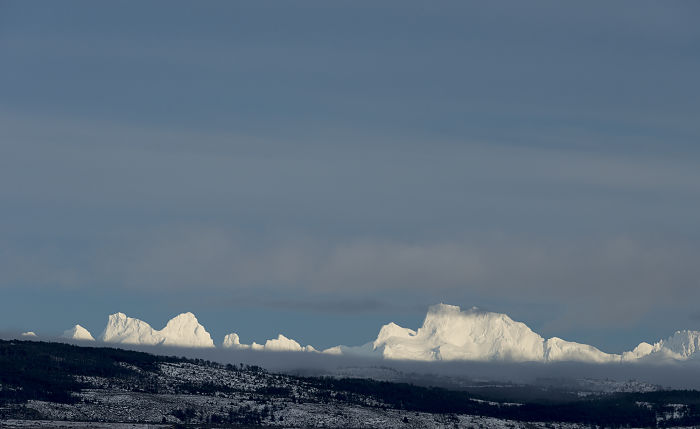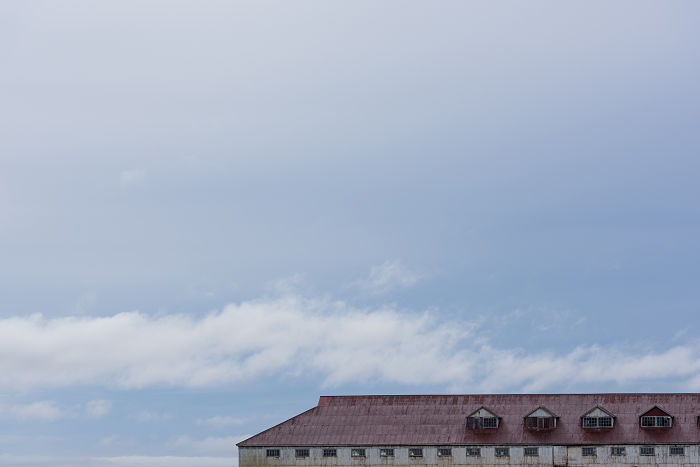 Photo: Pablo Valenzuela Vaillant
Photo: Pablo Valenzuela VaillantAs part of a special online series of conversations with the panel of judges of the 5th Patagonia Photo Contest, Patagon Journal interviewed last week via Instagram Live the renowned Chilean photographer Pablo Valenzuela Vaillant.
Pablo, 56, is a photographer with a long track record in Chile. He studied civil engineering at Chile’s Catholic University but instead chose to follow his passion for photography. A contributing editor to Patagon Journal, his photos have graced our covers and editions several times. His work has been featured in dozens of books as well as expositions in Chile and elsewhere, such as “Habitar la Inmensidad” (Inhabiting the Immensity), Rapa Nui, “Chile Blanco” (White Chile), and "Geometría del Instante” (Geometry of the Moment).
The following are excerpts from our recent interview with Pablo which was conducted by Patrick Nixon, a Patagon Journal editor-at-large who is a journalist from Ireland that has been living in Santiago, Chile, since the mid-1990s.
Patrick Nixon: You studied civil engineering in college, but instead you went into photography immediately afterward, why?
Pablo Valenzuela Vaillant: It was actually a very gradual process. It began at a time when I began to climb mountains at the age of 12. I joined a climbing club at the age of 14, when I lived in Viña del Mar, called the Valparaíso Climbing Club. So, I started as a kid and I always wanted to convey the feeling that you get of being in the mountains. The best way to convey this feeling was through photography, which gradually took up more space in my own mind and evolved into one of my main priorities. I became more a photographer than a mountaineer. I always liked mountaineering very much because it is a sport that coincides with nature, the sporting challenge and working in a tight-knit group. These aspects of mountaineering attracted me a lot which I have all continued in some way with photography.
You have said in past interviews that you don't identify yourself as a landscape photographer, could you talk a bit on your philosophy behind that?
For me it is super important to transmit something that one sees. When you are facing a setting, in that precise moment, you can take infinite photographs; you can focus on the smallest detail, the range, focus less on one side and more on the other. There are many ways to interpret what you are seeing. A minute can determine the conditions of light and very specific shapes. These lights and shapes are what I want to convey, what one observes with the eyes and the heart, I transmit this with an image. You take a photograph in the moment, not later on the computer. Therefore, what one observes has a lot of feeling and sometimes it is also something very personal for me. Photography is an art, because it's the action of capturing and transmiting those sensations with a completely unique perspective. I place a lot of emphasis onto capturing what I see, because it is a real moment, it is there and you retrieve it.
 In Pablo's photos the sky predominates. Photo: Pablo Valenzuela
In Pablo's photos the sky predominates. Photo: Pablo ValenzuelaYou say that you moved away from documentary-style photography. In your photography nowadays are you trying to communicate something specific, such as an idea or an emotion?
I am basing myself on something that is real. When I say that I am not a landscape photographer, I moreso mean that I am not a nature photographer. I love and adore nature, but in artistic terms, what I'm most passionate about is looking for forms in very specific things. I am always looking for perspectives and geometry in very precise moments of light. You can even spend several days discovering certain lights, perspectives and details.
When you go somewhere for photography, how do you determine how much and what photographic equipment to carry with you?
In general, I travel by car and when I have to walk I bring a backpack with a smaller load of equipment. I always try to walk with two cameras, a good lens, and with a tripod, just in case I see anything interesting. And you always have to be prepared for the rain.
When you are planning a trip, are you very clear about the aim of the trip? Is it important to have a clear plan when you go out to take photos?
I think it’s super important, because like in all work, you need to focus. But I also always have to be open to any possibilities. For example, in Patagonia, when I go to take photos of the horizon, or some houses, or when it is covered with fog, I must have enough flexibility to also say "okay, I am going to take advantage of this situation that is more favorable in these circumstances.”
What advice would you give a photographer who is just starting out?
Put your whole head, eyes and heart in to your photos. Do not think "I will fix this photo later.” I always say: photos must be taken with a digital camera, for better quality, but at the same time with a mentality that you have a film camera with only three photos left on the roll. You must take risks to get a very good photo, and don't hesitate.
 Photo: Pablo Valenzuela
Photo: Pablo ValenzuelaWhat do you think of post-production in photography?
I believe that it is a tremendous advantage, but it must be taken seriously and professionally, in the sense of rescuing all the good things in digital, but doing it with dedication. Digital has an edge in a technical sense, regarding its magnification, new lenses, cameras, sensors ... It has come so far that it produces very good quality photographs. Still, you have to take the photos with a similar mentality as before when it was with film.
Regarding the photo contest, what advice do you have for participants?
When I am judging I look for creative photos, images that have a twist, a different way of showing something, an unusual look at something habitual, but always with honesty and meaning. Technique is always important, too. It is the starting point. It is a necessary requirement, but it's not enough. At the end of the day, photography has three variables: the aperture of the lens, the speed, and the angle of vision.





.gif)



